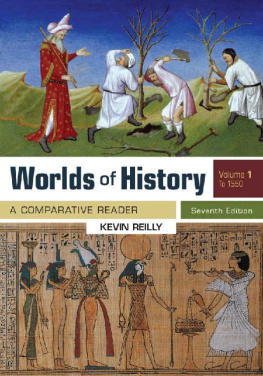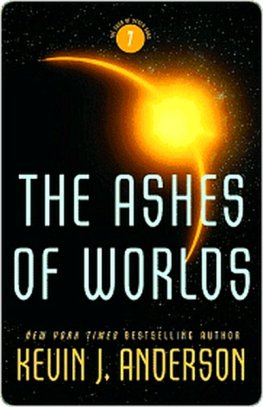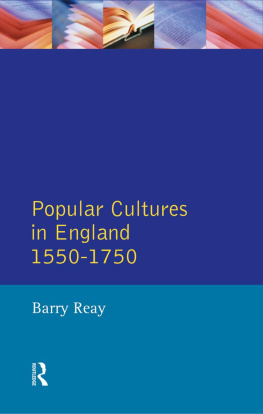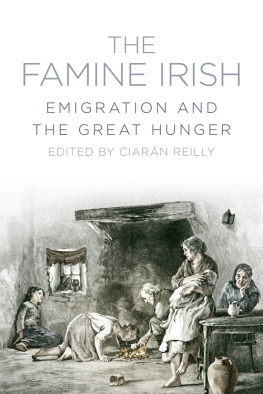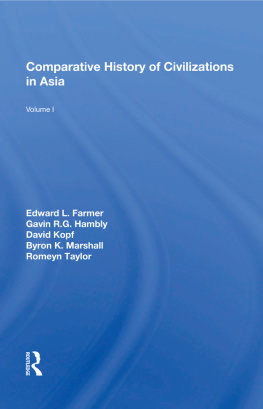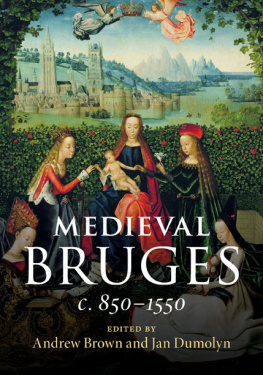Kevin Reilly - Worlds of History, Volume 1: A Comparative Reader, to 1550
Here you can read online Kevin Reilly - Worlds of History, Volume 1: A Comparative Reader, to 1550 full text of the book (entire story) in english for free. Download pdf and epub, get meaning, cover and reviews about this ebook. year: 2019, publisher: Bedford/St. Martins, genre: Romance novel. Description of the work, (preface) as well as reviews are available. Best literature library LitArk.com created for fans of good reading and offers a wide selection of genres:
Romance novel
Science fiction
Adventure
Detective
Science
History
Home and family
Prose
Art
Politics
Computer
Non-fiction
Religion
Business
Children
Humor
Choose a favorite category and find really read worthwhile books. Enjoy immersion in the world of imagination, feel the emotions of the characters or learn something new for yourself, make an fascinating discovery.
- Book:Worlds of History, Volume 1: A Comparative Reader, to 1550
- Author:
- Publisher:Bedford/St. Martins
- Genre:
- Year:2019
- Rating:4 / 5
- Favourites:Add to favourites
- Your mark:
- 80
- 1
- 2
- 3
- 4
- 5
Worlds of History, Volume 1: A Comparative Reader, to 1550: summary, description and annotation
We offer to read an annotation, description, summary or preface (depends on what the author of the book "Worlds of History, Volume 1: A Comparative Reader, to 1550" wrote himself). If you haven't found the necessary information about the book — write in the comments, we will try to find it.
Kevin Reilly: author's other books
Who wrote Worlds of History, Volume 1: A Comparative Reader, to 1550? Find out the surname, the name of the author of the book and a list of all author's works by series.
Worlds of History, Volume 1: A Comparative Reader, to 1550 — read online for free the complete book (whole text) full work
Below is the text of the book, divided by pages. System saving the place of the last page read, allows you to conveniently read the book "Worlds of History, Volume 1: A Comparative Reader, to 1550" online for free, without having to search again every time where you left off. Put a bookmark, and you can go to the page where you finished reading at any time.
Font size:
Interval:
Bookmark:

The front cover

A Comparative Reader
- Volume One: To 1550
- Seventh Edition
- Kevin Reilly
- Raritan Valley College

For Bedford/St. Martins
Vice President, Editorial, Macmillan Learning Humanities: Edwin Hill
Senior Program Director for History: Michael Rosenberg
Senior Program Manager for History: William J. Lombardo
History Marketing Manager: Melissa Rodriguez
Director of Content Development, Humanities: Jane Knetzger
Executive Development Manager, Humanities/Developmental Editor: Susan McLaughlin
Associate Content Project Manager: Matt Glazer
Workflow Manager: Lisa McDowell
Production Supervisor: Robin Besofsky
Associate Editor: Mollie Chandler
Media Project Manager: Michelle Camisa
Manager of Publishing Services: Andrea Cava
Project Management: Lumina Datamatics, Inc.
Composition: Lumina Datamatics, Inc.
Text Permissions Researcher: Elaine Kosta, Lumina Datamatics, Inc.
Text Permissions Editor: Michael McCarty
Copy Editor: Bridget Leahy
Executive Permissions Editor: Robin Fadool
Photo Researcher: Naomi Kornhauser
Director of Design, Content Management: Diana Blume
Cover Design: William Boardman
Cover Art: (top) Middle East / Arabia: Collecting frankincense from trees. Le Livre des Merveilles, Paris, c. 1420 / Pictures from History / Bridgeman Images; (bottom) Ancient Egyptian Book of the Dead of Khonsumes. New Kingdom, XX Dynasty / G. Dagli Orti / De Agostini Picture Library / Bridgeman Images
Copyright 2020, 2017, 2013, 2010 by Bedford/St. Martins.
All rights reserved. No part of this book may be reproduced, stored in a retrieval system, or transmitted in any form or by any means, electronic, mechanical, photocopying, recording, or otherwise, except as may be permitted by law or expressly permitted in writing by the Publisher.
1 2 3 4 5 6 24 23 22 21 20 19
For information, write: Bedford/St. Martins, 75 Arlington Street, Boston, MA 02116
ISBN 978-1-319-27908-0 (mobi)
Acknowledgments
Text acknowledgments and copyrights appear at the back of the book on , which constitute an extension of the copyright page. Art acknowledgments and copyrights appear on the same page as the art selections they cover.
Since the time I began writing for and about the introductory history course, we have transformed it in three important ways. First, beginning in the 1980s, we recognized the need to teach about the entire world, including the Americas, Europe, Asia, Africa, and the Pacific. Second, we sought to integrate new fields that have enriched the study of history. Even before the 1980s, historians were adding coverage of social history to their classes. This book follows suit, covering the history of social classes, women, and minorities. The carefully selected sources in this book trace the influence of education, migration, science, religion, and popular culture throughout world history, and explore whole new fields such as environmental history and the history of the senses. In fact, we have added a chapter on each of these two recently developed fields to this new edition.
Now, in our attempts to explore world and social history in detail, we run into the question of what to include and what to leave out. How do we decide what is truly important? As we struggled to decide what to teach, we became more conscious of the choices we made and more aware of the value of teaching how to learn as well as what to learn.
The third transformation of the teaching of history, occurring today, is to teach history as a process of learning. Our goal now is to teach students historical thinking skills or habits of mind. This goal is now receiving explicit formulation and vigorous advocacy in the efforts of institutions like the American Historical Association and the College Board. To support the teaching and learning of history as a process, this book features sections in each chapter called Thinking Historically. The idea behind teaching these historical thinking skills is not to abandon subject matter; indeed, we cannot learn anything without it. Rather, we have harnessed subject matter with lessons intended to improve both critical thinking skills in general and historical thinking skills more specifically.
To engage students who are not only new to the college experience but new to reading source material as well, I have continued my efforts to provide accessible readings that pique their interest. This updated edition aims to maintain that high level of reader interest with new selections, including an exploration of the rise of individuality as evidenced by three ancient Mesopotamian sculptures, a glimpse into colonial India and Africa through the novels of E. M. Forster and Ren Maran, and the riveting voice of Sojourner Truth. As in previous editions, I have included secondary as well as primary texts. In some chapters the secondary text introduces an issue that the primary sources then address, while at other times the secondary source offers a summary or suggestions for new directions. My aim in combining these two types of sources is for students to learn how texts, whether primary or secondary, talk to each other and without having to buy separate books of each.
As a framework, Ive used a thematic and topical organization that also proceeds chronologically, with each chapter focusing on a captivating topic within a particular time period. I have long found a comparative approach to be a useful tool for approaching world history, and for this seventh edition, I have continued to use this tool, examining two or more cultures at a time. In some chapters students can trace parallel developments in separate regions, such as the development of society in ancient Greece and India in ), or the chapter on the scientific revolution in Europe, the Ottoman Empire, China, Japan, and the Americas (Chapter 18). Even the normally bipolar study of the Cold War can be expanded, as documents in Chapter 25 relating to the superpowers fight to control the emerging Third World show.
I continue to include a wealth of pedagogical tools to help students unlock the readings and hone their critical thinking skills. Each chapter begins with a Historical Context introduction that sets the stage for directed comparisons among the chapters readings. The Thinking Historically section follows, which introduces a particular critical thinking skill such as asking about author, audience, and agenda, or distinguishing causes of change that is designed to mine the chapters selections. Introductions preceding each selection provide additional context, while document-specific Thinking Historically content poses questions to encourage close analysis of the selections using the critical thinking skill introduced at the beginning of the chapter. Explanatory gloss notes and pronunciation guides throughout help ensure comprehension of the readings. A set of Reflections that both summarizes and extends the chapters lessons concludes each chapter.
Next pageFont size:
Interval:
Bookmark:
Similar books «Worlds of History, Volume 1: A Comparative Reader, to 1550»
Look at similar books to Worlds of History, Volume 1: A Comparative Reader, to 1550. We have selected literature similar in name and meaning in the hope of providing readers with more options to find new, interesting, not yet read works.
Discussion, reviews of the book Worlds of History, Volume 1: A Comparative Reader, to 1550 and just readers' own opinions. Leave your comments, write what you think about the work, its meaning or the main characters. Specify what exactly you liked and what you didn't like, and why you think so.

